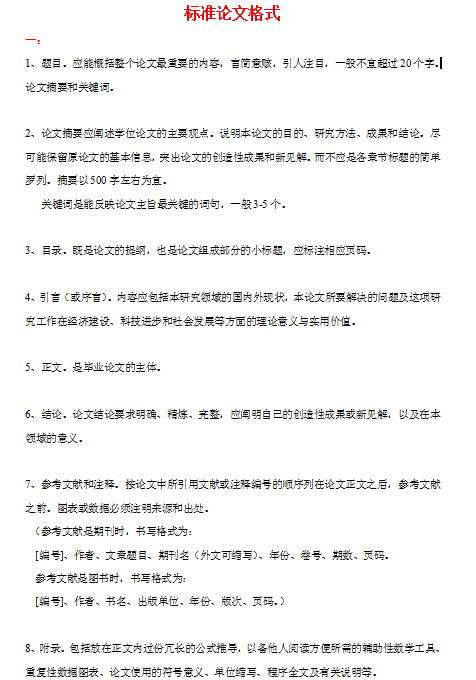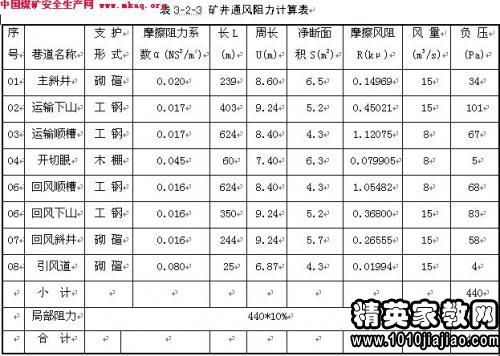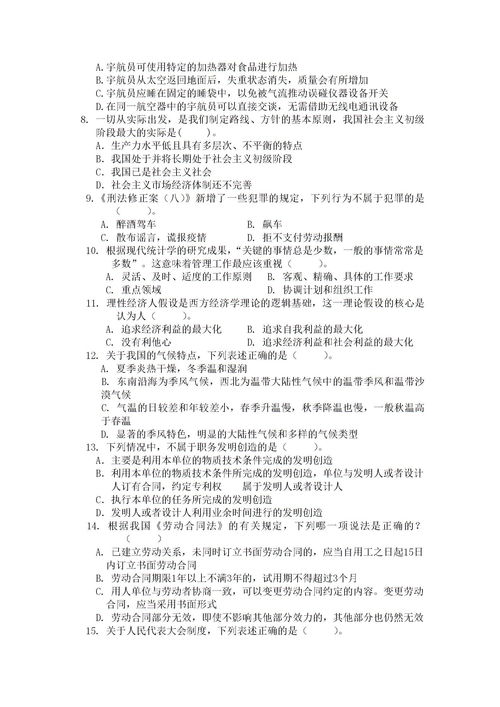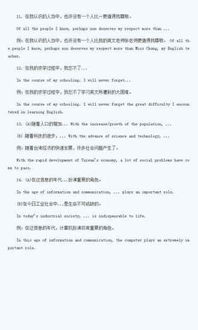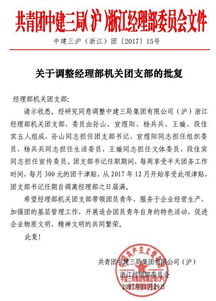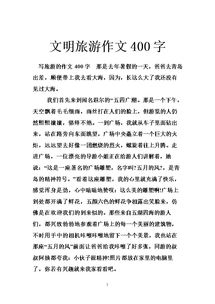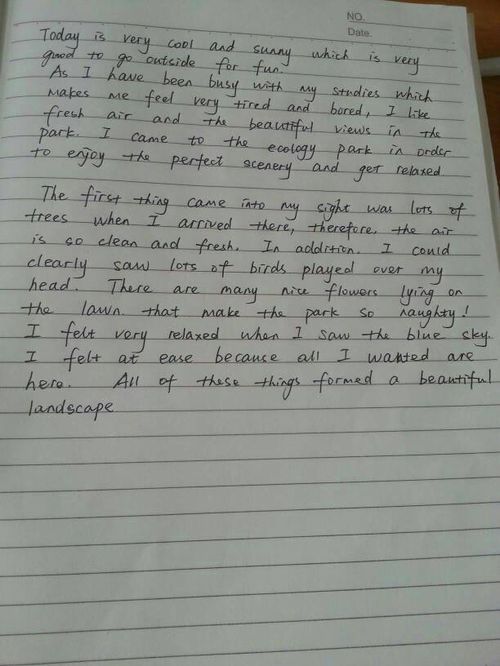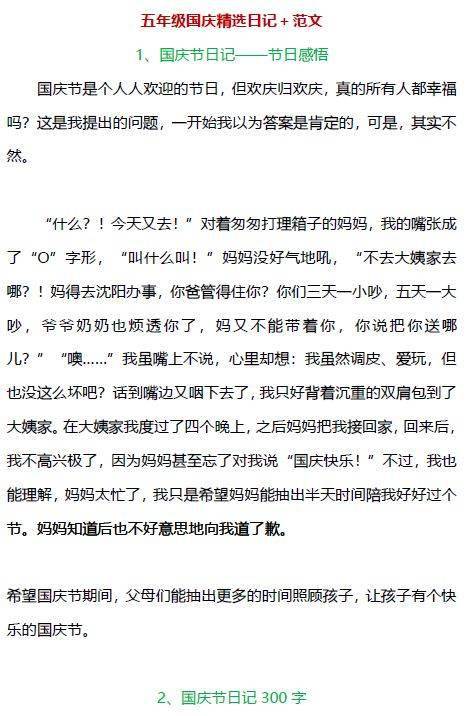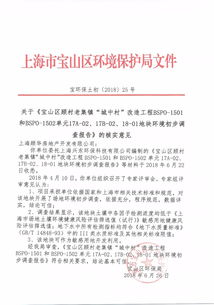1.介绍中国文化的英语作文
Traditional Chinese culture is beginning to capture the attention of the world. This is true even as popular culture that has traditionally been considered Western begins to spread throughout China. Kung Fu, especially, has had a great impact on the millions of people who first learned about China through it. From that, they may come to China and learn about other aspects of this culture, such as traditional operas like the Beijing and Sichuan ones. Asian nations have long known about the greatness of ancient Chinese culture. Their own cultures are a mix of native ones and those Chinese characteristics. Korea and Japan long ago adopted ideas such as Confucianism is something that continues today even as it is challenged by Pop Culture. This strength comes from the ideas given in the Four Books of Confucianism (The Great Learning, The Doctrine of the Mean, The Analects of Confucius, and The Book of Mencius). These books built upon the ideas of an even more ancient period codified in the Five Classics. From them, the West learns such things as Fengshui and other concepts that are uniquely Chinese. China has taken steps to further this spread of its culture by establishing Chinese Cultural Centers in such places as the United States and Europe.
中国传统文化正在吸引全世界的注意,尽管在传统意义上被看成是西方文化的流行文化开始在中国广泛传播。尤其是中国功夫,对于那些通过功夫初次了解中国的成千上万的人来讲,有着非常大的影响。由于功夫,他们可能来到中国,学习了解中国文化的其他方面,比如京剧和川剧这样的传统戏剧。亚洲国家很早以前就知道古代中国文化的博大。他们自己的文化混合了本民族的文化和中国文化的特色。韩国和日本很早就把儒教等观念引进了他们的社会当中。甚至在被流行文化冲击的今天,儒教的影响也一直在延续。这种力量来自“四书”(《大学》、《中庸》、《论语》和《孟子》)中的思想。这些书是依照“五经”之中所体现的更为早期的思想而著成的。西方人从中了解到了诸如风水等中国所特有的文化概念。中国已经通过向其他国家派遣文化使者并在美国、欧洲等地建立中国文化中心来进一步推广中国文化。
2.关于写中国文化的英语作文100词
Our country is an old country with about five thousand years history so it has been attracting so many foreign tourists or students to come here to explore our history. Unlike other countries, China has experienced many dynasties and its culture has spread home and abroad . In terms of character, it has developed so much that we can hardly grasp every one of them though we are Chinese, let alone foreigners. So this has made so many foreigners much interested in it . Chinese Kun-fu is also impressive in the world .。
3.介绍中国文化的英语作文
Traditional Chinese culture is beginning to capture the attention of the world. This is true even as popular culture that has traditionally been considered Western begins to spread throughout China. Kung Fu, especially, has had a great impact on the millions of people who first learned about China through it. From that, they may come to China and learn about other aspects of this culture, such as traditional operas like the Beijing and Sichuan ones. Asian nations have long known about the greatness of ancient Chinese culture. Their own cultures are a mix of native ones and those Chinese characteristics. Korea and Japan long ago adopted ideas such as Confucianism is something that continues today even as it is challenged by Pop Culture. This strength comes from the ideas given in the Four Books of Confucianism (The Great Learning, The Doctrine of the Mean, The Analects of Confucius, and The Book of Mencius). These books built upon the ideas of an even more ancient period codified in the Five Classics. From them, the West learns such things as Fengshui and other concepts that are uniquely Chinese. China has taken steps to further this spread of its culture by establishing Chinese Cultural Centers in such places as the United States and Europe.中国传统文化正在吸引全世界的注意,尽管在传统意义上被看成是西方文化的流行文化开始在中国广泛传播。
尤其是中国功夫,对于那些通过功夫初次了解中国的成千上万的人来讲,有着非常大的影响。由于功夫,他们可能来到中国,学习了解中国文化的其他方面,比如京剧和川剧这样的传统戏剧。
亚洲国家很早以前就知道古代中国文化的博大。他们自己的文化混合了本民族的文化和中国文化的特色。
韩国和日本很早就把儒教等观念引进了他们的社会当中。甚至在被流行文化冲击的今天,儒教的影响也一直在延续。
这种力量来自“四书”(《大学》、《中庸》、《论语》和《孟子》)中的思想。这些书是依照“五经”之中所体现的更为早期的思想而著成的。
西方人从中了解到了诸如风水等中国所特有的文化概念。中国已经通过向其他国家派遣文化使者并在美国、欧洲等地建立中国文化中心来进一步推广中国文化。
4.给一篇简单介绍中国文化的英语文章
It is the day that the families get together.
The spring festival is usually in the February ,sometimes in January.In the spring festival,every family all paste the lucky inscriptions,they fire the cracker,they eat the dumplings.The day before the new year's first day is the new year's eve,same as the christmas eve,all the families get together to have the new year's dinner,wish each other,talk about the wishes about the new year.Small children will receive the money given to them as a lunar new year gift.
5.关于中国传统文化的英语作文
这些东西都可以再网上查到!关于长城的传说 In the north of China, there lies a 6,700-kilometer-long (4,161-mile-long) ancient wall. Now well-known as the Great Wall of China, it starts at the Jiayuguan Pass of Gansu Province in the west and ends at the Shanhaiguan Pass of Hebei Province in the east. As one of the Eight Wonders in the world, the Great Wall of China has become the symbol of the Chinese nation and its culture. Lots of beautiful legends and stories about the Great Wall took place following along the construction, and since that time these stories have spread around the country. Those that happened during construction are abundant, such as Meng Jiangnu's story and the legend of the Jiayuguan Pass. Meng Jiangnu's story is the most famous and widely spread of all the legends about the Great Wall. The story happened during the Qin Dynasty (221BC-206BC). It tells of how Meng Jiangnu's bitter weeping made a section of the Great Wall collapse. Meng Jiangnu's husband Fan Qiliang was caught by federal officials and sent to build the Great Wall. Meng Jiangnu heard nothing from him after his departure, so she set out to look for him. Unfortunately, by the time she reached the great wall, she discovered that her husband had already died. Hearing the bad news, she cried her heart out. Her howl caused the collapse of a part of the Great Wall. This story indicates that the Great Wall is the production of tens of thousands of Chinese commoners. Another legend about the Jiayuguan Pass tells of a workman named Yi Kaizhan in the Ming Dynasty (1368BC-1644BC) who was proficient in arithmetic. He calculated that it would need 99,999 bricks to build the Jiayuguan Pass. The supervisor did not believe him and said if they miscalculated by even one brick, then all the workmen would be punished to do hard work for three years. After the completion of the project, one brick was left behind the Xiwong city gate. The supervisor was happy at the sight of the brick and ready to punish them. However Yi Kaizhan said with deliberation that the brick was put there by a supernatural being to fix the wall. A tiny move would cause the collapse of the wall. Therefore the brick was kept there and never moved. It can still be found there today on the tower of the Jiayuguan Pass. In addition to the above-mentioned stories about the construction of the Great Wall, there are also plenty of stories about current scenic spots. A famous one is the legend of the Beacon Tower. This story happened during the Western Zhou Dynasty (11th century BC-711 BC). King You had a queen named Bao Si, who was very pretty. King You liked her very much, however Bao Si never smiled. An official gave a suggestion that setting the beacon tower on fire would frighten the King's subjects, and might make the queen smile. King You liked the idea. The subjects were fooled and Bao Si smiled at the sight of the chaos. Later enemies invaded Western Zhou, King You set the beacon tower on fire to ask for help. No subjects came to help because they had been fooled once before. Thus, King Zhou was killed by the enemy and Western Zhou came to an end. Beautiful stories and legends about the Great Wall help to keep alive Chinese history and culture. In each dynasty after the building of the Great Wall, many more stories were created and spread. 历史 No one can tell precisely when the building of the Great Wall was started but it is popularly believed that it originated as a military fortification against intrusion by tribes on the borders during the earlier Zhou Dynasty. Late in the Spring and Autumn Period (770 BC - 476 BC), the ducal states extended the defence work and built "great" structures to prevent the attacks from other states. It was not until the Qin Dynasty that the separate walls, constructed by the states of Qin, Yan and Zhao kingdoms, were connected to form a defensive system on the northern border of the country by Emperor Qin Shi Huang (also called Qin Shi Huangdi by westerners or the First Emperor). After the emperor unified the country in 214 BC, he ordered the construction of the wall. It took about ten years to finish and the wall stretched from Linzhao (in the eastern part of today's Gansu Province) in the west to Liaodong (in today's Jilin Province) in the east. The wall not only served as a defence in the north but also symbolized the power of the emperor. From the Qin Dynasty onwards, Xiongnu, an ancient tribe that lived in North China, frequently harassed the northern border of the country. During the Han Dynasty, Emperor Wu (Han Wu Di), sent three expeditions to fight against the 。
6.关于中国传统文化的英语作文,例如龙,丝绸,长城等等.介绍能具有代
这些东西都可以再网上查到!关于长城的传说 In the north of China, there lies a 6,700-kilometer-long (4,161-mile-long) ancient wall. Now well-known as the Great Wall of China, it starts at the Jiayuguan Pass of Gansu Province in the west and ends at the Shanhaiguan Pass of Hebei Province in the east. As one of the Eight Wonders in the world, the Great Wall of China has become the symbol of the Chinese nation and its culture. Lots of beautiful legends and stories about the Great Wall took place following along the construction, and since that time these stories have spread around the country. Those that happened during construction are abundant, such as Meng Jiangnu's story and the legend of the Jiayuguan Pass. Meng Jiangnu's story is the most famous and widely spread of all the legends about the Great Wall. The story happened during the Qin Dynasty (221BC-206BC). It tells of how Meng Jiangnu's bitter weeping made a section of the Great Wall collapse. Meng Jiangnu's husband Fan Qiliang was caught by federal officials and sent to build the Great Wall. Meng Jiangnu heard nothing from him after his departure, so she set out to look for him. Unfortunately, by the time she reached the great wall, she discovered that her husband had already died. Hearing the bad news, she cried her heart out. Her howl caused the collapse of a part of the Great Wall. This story indicates that the Great Wall is the production of tens of thousands of Chinese commoners. Another legend about the Jiayuguan Pass tells of a workman named Yi Kaizhan in the Ming Dynasty (1368BC-1644BC) who was proficient in arithmetic. He calculated that it would need 99,999 bricks to build the Jiayuguan Pass. The supervisor did not believe him and said if they miscalculated by even one brick, then all the workmen would be punished to do hard work for three years. After the completion of the project, one brick was left behind the Xiwong city gate. The supervisor was happy at the sight of the brick and ready to punish them. However Yi Kaizhan said with deliberation that the brick was put there by a supernatural being to fix the wall. A tiny move would cause the collapse of the wall. Therefore the brick was kept there and never moved. It can still be found there today on the tower of the Jiayuguan Pass. In addition to the above-mentioned stories about the construction of the Great Wall, there are also plenty of stories about current scenic spots. A famous one is the legend of the Beacon Tower. This story happened during the Western Zhou Dynasty (11th century BC-711 BC). King You had a queen named Bao Si, who was very pretty. King You liked her very much, however Bao Si never smiled. An official gave a suggestion that setting the beacon tower on fire would frighten the King's subjects, and might make the queen smile. King You liked the idea. The subjects were fooled and Bao Si smiled at the sight of the chaos. Later enemies invaded Western Zhou, King You set the beacon tower on fire to ask for help. No subjects came to help because they had been fooled once before. Thus, King Zhou was killed by the enemy and Western Zhou came to an end. Beautiful stories and legends about the Great Wall help to keep alive Chinese history and culture. In each dynasty after the building of the Great Wall, many more stories were created and spread. 历史 No one can tell precisely when the building of the Great Wall was started but it is popularly believed that it originated as a military fortification against intrusion by tribes on the borders during the earlier Zhou Dynasty. Late in the Spring and Autumn Period (770 BC - 476 BC), the ducal states extended the defence work and built "great" structures to prevent the attacks from other states. It was not until the Qin Dynasty that the separate walls, constructed by the states of Qin, Yan and Zhao kingdoms, were connected to form a defensive system on the northern border of the country by Emperor Qin Shi Huang (also called Qin Shi Huangdi by westerners or the First Emperor). After the emperor unified the country in 214 BC, he ordered the construction of the wall. It took about ten years to finish and the wall stretched from Linzhao (in the eastern part of today's Gansu Province) in the west to Liaodong (in today's Jilin Province) in the east. The wall not only served as a defence in the north but also symbolized the power of the emperor. From the Qin Dynasty onwards, Xiongnu, an ancient tribe that lived in North China, frequently harassed the northern border of the country. During the Han Dynasty, Emperor Wu (Han Wu Di), sent three expeditions to fight against the 。
7.大一介绍中国传统文化英语作文
spring festival
far and away the most important holiday in china is spring festival, also known as the chinese new year. to the chinese people it is as important as christmas to people in the west. the dates for this annual celebration are determined by the lunar calendar rather than the gregorian calendar, so the timing of the holiday varies from late january to early february.
to the ordinary chinese, the festival actually begins on the eve of the lunar new year's day and ends on the fifth day of the first month of the lunar calendar. but the 15th of the first month, which normally is called the lantern festival, means the official end of the spring festival in many parts of the country.
8.关于中国传统文化的英语作文
Culture of China The Culture of China is home to one of the world's oldest and most complex civilizations. China boasts a history rich in over 5,000 years of artistic, philosophical, political, and scientific advancement. Though regional differences provide a sense of diversity, commonalities in language and religion connect a culture distinguished by such significant contributions such as Confucianism and Taoism. Confucianism was the official philosophy throughout most of Imperial China's history and strongly influenced other countries in East Asia. Mastery of Confucian texts provided the primary criterion for entry into the imperial bureaucracy.With the rise of Western economic and military power beginning in the mid-19th century, Western systems of social and political organization gained adherents in China. Some of these would-be reformers rejected China's cultural legacy, while others sought to combine the strengths of Chinese and Western cultures.China is a unified nation consisting of many different ethnic groups. Fifty-six different ethnic groups make up the great Chinese national family. Because the Han people accounts for more than ninety percent of China's population, the remaining fifty-five groups are generally referred to as "ethnic minorities." Next to the majority Han, the Mongolian, Hui, Tibetan, and Uygur peoples comprise the largest ethnic groups. Although China's ethnic minorities do not account for a large portion of the population, they are distributed over a vast area, residing in every corner of China.Particularly since the implementation of China's opening and reform policy, the central government has increased investment in minority areas and accelerated their opening to the outside world. This has resulted in an upsurge of economic development in these areas. Each of China's ethnic minority groups possesses a distinctive culture. The Chinese government respects minority customs, and works to preserve, study, and collate the cultural artifacts of China's ethnic minority groups. The government vigorously supports the development of minority culture and the training of minority cultural workers, and fosters the development of traditional minority medicine.The relation among China's ethnic groups can be described as "overall integration, local concentration, mutual interaction." Concentrations of ethnic minorities reside within predominantly Han areas, and the Han people also reside in minority areas, indicating that there has been extensive exchanges among China's ethnic groups since ancient times. With the development of the market economy, interaction among ethnic groups has become even more active in the areas of government, economics, culture, daily life, and marriage. Linked by interdependence, mutual assistance, and joint development, their common goals and interests creating a deep sense of solidarity, China's ethnic groups resemble a great national family, together building Chinese civilization.。
9.【英语作文《向外国朋友介绍中国文化》】
Chinese tea drinking tea has four thousand years of history,More kinds of tea in China, including longjing tea is famous in the worldThe people are generally made of porcelain teapot, teacup to drink teaSeem to have tea has is China's a habit, and tea is commonplace, people often in the teahouse, restaurants, at home or work break time drinking tea.According to records of tea healthy, refreshing oneself, green tea anti-cancer, etc.看看行么.记得答复.呵呵.希望能帮上你的忙啦.。
10.像外国人介绍中国传统文化的英语作文,高一的,简单一点的英语作文
Traditional Chinese culture is beginning to capture the attention of the world. This is true even as popular culture that has traditionally been considered Western begins to spread throughout China. Kung Fu, especially, has had a great impact on the millions of people who first learned about China through it. From that, they may come to China and learn about other aspects of this culture, such as traditional operas like the Beijing and Sichuan ones. Asian nations have long known about the greatness of ancient Chinese culture. Their own cultures are a mix of native ones and those Chinese characteristics. Korea and Japan long ago adopted ideas such as Confucianism is something that continues today even as it is challenged by Pop Culture. This strength comes from the ideas given in the Four Books of Confucianism (The Great Learning, The Doctrine of the Mean, The Analects of Confucius, and The Book of Mencius). These books built upon the ideas of an even more ancient period codified in the Five Classics. From them, the West learns such things as Fengshui and other concepts that are uniquely Chinese. China has taken steps to further this spread of its culture by establishing Chinese Cultural Centers in such places as the United States and Europe.中国传统文化正在吸引全世界的注意,尽管在传统意义上被看成是西方文化的流行文化开始在中国广泛传播。
尤其是中国功夫,对于那些通过功夫初次了解中国的成千上万的人来讲,有着非常大的影响。由于功夫,他们可能来到中国,学习了解中国文化的其他方面,比如京剧和川剧这样的传统戏剧。
亚洲国家很早以前就知道古代中国文化的博大。他们自己的文化混合了本民族的文化和中国文化的特色。
韩国和日本很早就把儒教等观念引进了他们的社会当中。甚至在被流行文化冲击的今天,儒教的影响也一直在延续。
这种力量来自“四书”(《大学》、《中庸》、《论语》和《孟子》)中的思想。这些书是依照“五经”之中所体现的更为早期的思想而著成的。
西方人从中了解到了诸如风水等中国所特有的文化概念。中国已经通过向其他国家派遣文化使者并在美国、欧洲等地建立中国文化中心来进一步推广中国文化。
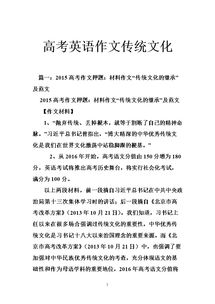

 0
0 2023-12-06 19:47
2023-12-06 19:47
